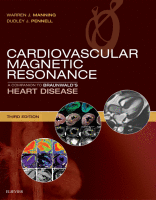Physical Address
304 North Cardinal St.
Dorchester Center, MA 02124

The development of ultrahigh field magnetic resonance (UHF-MR, B 0 ≥ 7 T, f ≥ 298 MHz) is moving forward at an amazing speed that is breaking through technical barriers almost as fast as they appear. UHF-MR has become an engine for…

Clinical cardiovascular magnetic resonance (CMR) had been in use for nearly 35 years and has become firmly established in the evaluation of congenital heart disease (CHD) in many ways, including anatomy, physiology, ventricular function, blood flow, and tissue characterization. In…

Magnetic resonance imaging (MRI) has gained popularity over the last decade because of its excellent soft tissue imaging capability and superior spatial resolution as well as lack of ionizing radiation. These properties have led to expanded indications for MRI. At…

During the last three decades, cardiovascular magnetic resonance (CMR) has developed into an important diagnostic clinical tool in cardiology. Not only the anatomy of the heart but also its function, metabolism, and perfusion, as well as the coronary arteries, can…

Introduction Cardiovascular magnetic resonance (CMR) imaging uses the 1 H nucleus in water (H 2 O) and fat (CH 2 and CH 3 groups) molecules as its only signal source, and therefore offers little insight into the biochemical state of…

Myocardial Oxygenation: Supply Versus Demand Under physiologic conditions, myocardial blood flow (MBF), myocardial oxygen consumption (MVO 2 ), and myocardial mechanics are intimately related. Therefore it is not surprising that the key disease processes involving the heart manifest from imbalances…

Respiration has been shown to be an important factor influencing the quality of cardiovascular magnetic resonance (CMR) images. In addition to cardiac motion, which can be addressed reasonably well by electrocardiographic (ECG) triggering, respiratory motion moves the position and distorts…

The idea of mapping measurements of blood flow onto a magnetic resonance (MR) image was first discussed in an article by Singer in 1978. The methods that followed could generally be categorized into time-of-flight (TOF) or phase shift types and…

The physiologic basis for and the general principles of myocardial perfusion cardiovascular magnetic resonance (CMR) are covered in detail in other chapters. The key challenge of first-pass dynamic contrast-enhanced acquisition is to capture data with high temporal and spatial resolution…

Introduction The concept of injecting a tracer into the blood stream and detecting its transit and distribution in the heart muscle for the assessment of myocardial perfusion is well established in nuclear cardiology and cardiovascular magnetic resonance (CMR). Both exogenous,…